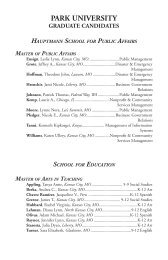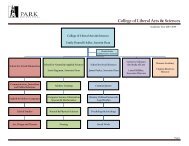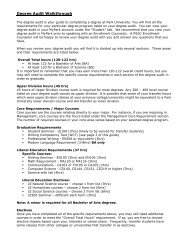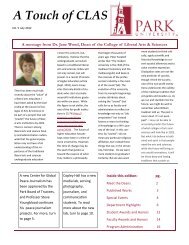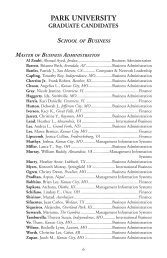How to Write a Radio Serial Drama for Social Development- PDF
How to Write a Radio Serial Drama for Social Development- PDF
How to Write a Radio Serial Drama for Social Development- PDF
Create successful ePaper yourself
Turn your PDF publications into a flip-book with our unique Google optimized e-Paper software.
58 Chapter Four: Blending S<strong>to</strong>ry and Message in the <strong>Drama</strong> Plot<br />
The Message<br />
in the S<strong>to</strong>ry<br />
The main plot<br />
and sub-plots<br />
must allow the<br />
message <strong>to</strong> be<br />
delivered:<br />
• Naturally;<br />
• Subtly; and<br />
•Gradually.<br />
5. Decide on a central uniting character where necessary. In health and<br />
family planning serials, <strong>for</strong> example, nurses, clinic workers, and doc<strong>to</strong>rs<br />
make useful central uniting characters, because they can have an obvious<br />
professional relationship with almost any character in any plot. In<br />
addition <strong>to</strong> tying the various plots <strong>to</strong>gether, this type of central uniting<br />
character helps demonstrate the message in a variety of circumstances.<br />
Such a character is far more believable if the drama shows her or him in a<br />
family role as well as a professional role. In other serials, such as the<br />
Indonesian example above, the central uniting character might be an<br />
adventurer who links <strong>to</strong>gether the various plots by moving among them.<br />
(More in<strong>for</strong>mation on the creation of this and other characters in the<br />
serial can be found in Chapter 5.)<br />
6. Prepare the full treatment of the plots and message, combining the<br />
main plot and the sub-plots. The writer must make sure that all the plots<br />
fit <strong>to</strong>gether well and that every aspect of the message can be covered<br />
naturally, subtly, and gradually by the s<strong>to</strong>ry. Many writers of Enter-<br />
Educate serials prefer a main plot that does not concentrate heavily on<br />
the message. Instead, they create a main plot, like the one above, that<br />
attracts and holds the audience with a gripping conflict and a dramatic<br />
climax. While the main plot may contain elements of the message, the<br />
sub-plots may be better able <strong>to</strong> convey the precise in<strong>for</strong>mation required<br />
and <strong>to</strong> demonstrate various aspects of the message.<br />
For example: The treatment extract of Too Late, Too Bad shows that the<br />
following messages were woven in<strong>to</strong> the different plots naturally, subtly,<br />
and gradually:<br />
• The importance of planning the family (main plot),<br />
• The importance of having young people understand the realities<br />
of AIDS, including the risk of contracting the disease through<br />
unin<strong>for</strong>med pre-marital sex (sub-plot B),<br />
• Encouragement of proper care of mothers and infants (sub-plots<br />
A and C), and<br />
• Encouragement of community members <strong>to</strong> take a more active<br />
role in providing <strong>for</strong> the welfare of mothers and children and in<br />
providing adequate sex education <strong>for</strong> young people <strong>to</strong> prepare<br />
them <strong>for</strong> adult life (sub-plot C).<br />
The major conflict in that serial was not related directly <strong>to</strong> a health<br />
and family planning message. Rather, it centered on the feud between<br />
two wealthy Sunville families. This “outside-the-message” central conflict<br />
allowed the s<strong>to</strong>ry <strong>to</strong> attract and hold the attention of the audience, while<br />
the various aspects of the message were brought in<strong>to</strong> the s<strong>to</strong>ry through<br />
the sub-plots as a normal part of everyday life in Sunville.<br />
7. Treatment review. Be<strong>for</strong>e individual scripts are written, the full<br />
treatment of the main plot and the sub-plots should be reviewed and<br />
approved by the script review panel. The panel meets with the writer <strong>to</strong><br />
discuss concerns and make suggestions, and changes are made<br />
accordingly. Only after the treatment is approved does the writer begin<br />
crafting individual scripts.





